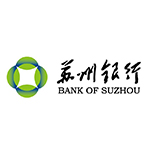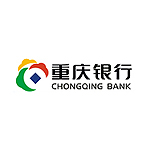CEB BANK(601818)
Search documents
银行积极响应国家政策 落实发放育儿补贴资金
Zheng Quan Ri Bao Zhi Sheng· 2025-11-23 16:41
Core Viewpoint - Multiple banks in China are actively participating in the distribution of childcare subsidies to support the national policy aimed at encouraging childbirth, with efficient financial services ensuring that benefits reach newborn families accurately [1][2]. Group 1: Implementation of Childcare Subsidies - The implementation plan for childcare subsidies was issued by the Central Committee and the State Council in July, establishing a subsidy of 3,600 yuan per child per year for children under three years old starting from January 1, 2025 [2]. - China Bank successfully distributed the first batch of childcare subsidies in Liaoning and Hebei, benefiting nearly 1,600 newborn families [2]. - Banks are conducting promotional activities to raise awareness of the policy and are offering additional services such as online applications for social security cards and discounts on parenting-related products [2][3]. Group 2: Role of Commercial Banks - Several banks, including Agricultural Bank and Everbright Bank, have opened channels for online applications for childcare subsidies, enhancing accessibility for families [3]. - The involvement of commercial banks is driven by their robust payment systems and high service efficiency, which are essential for the rapid implementation of the policy [3][4]. - Banks are expected to leverage their extensive service networks to facilitate the effective rollout of the childbirth support policy while also expanding their customer base and service offerings [4]. Group 3: Challenges and Future Developments - Challenges include the need for better integration with government systems and ensuring accurate subsidy distribution to avoid errors [4]. - The surge in business volume may pressure bank branches, necessitating improvements in service efficiency and accuracy in fund transfers [4]. - Looking ahead, banks plan to broaden the coverage of subsidies and introduce diverse financial services related to childbirth, including consumer finance, insurance, and savings products [4].
银行周报(2025/11/17-2025/11/21):多家银行股东及管理层踊跃增持-20251123





GUOTAI HAITONG SECURITIES· 2025-11-23 12:42
Investment Rating - The report assigns an "Accumulate" rating for the banking sector [5]. Core Insights - Since the beginning of the year, many banks' shareholders and executives have actively increased their holdings, ranking first among 31 industries in terms of the amount of increase. Notable banks with significant increases include Nanjing Bank, Suzhou Bank, Everbright Bank, Shanghai Pudong Development Bank, and Chengdu Bank [2][5]. - The net amount of shareholding changes in the banking sector is approximately 9.03 billion, with an increase of about 12.63 billion, ranking second only to the transportation industry. The decrease amounts to about 3.60 billion [5]. - More than half of the banks have disclosed plans for major shareholders or executives to increase their holdings, with the top three banks in terms of increased amounts being Nanjing Bank (7.38 billion), Suzhou Bank (1.74 billion), and Everbright Bank (1.24 billion) [5]. Summary by Sections Related Reports - The report references several related reports on banking, including topics such as mid-term dividend acceleration and credit issuance tracking [4]. Industry and Company Dynamics Tracking Major News - The People's Bank of China announced the LPR rates for one year and five years remain unchanged at 3.0% and 3.5%, respectively [11]. - Recent surveys indicate that operating loan rates have dropped significantly, with some banks offering rates below 2.5% [11]. Major Announcements - Wuxi Bank plans to implement a mid-term dividend of 0.11 yuan per share, totaling 241 million [12]. - Nanjing Bank's major shareholder, France's BNP Paribas, increased its holdings by 128 million shares, representing 1.04% of the total share capital [12]. Weekly Data Tracking - During the period from November 17 to November 21, the banking sector experienced a decline of 0.87%, outperforming the CSI 300 index by 2.90 percentage points [5][14]. - The average interest rate for the six-month national large banks and joint-stock banks increased by 7 basis points to 0.68% [5].
股份制银行板块11月21日跌1.29%,民生银行领跌,主力资金净流出5.23亿元
Zheng Xing Xing Ye Ri Bao· 2025-11-21 09:33
Core Points - The banking sector experienced a decline of 1.29% on November 21, with Minsheng Bank leading the drop [1] - The Shanghai Composite Index closed at 3834.89, down 2.45%, while the Shenzhen Component Index closed at 12538.07, down 3.41% [1] Banking Sector Performance - CITIC Bank (601998) closed at 7.92, down 0.50% with a trading volume of 680,700 shares and a transaction value of 542 million yuan [1] - China Merchants Bank (600036) closed at 43.00, down 0.53% with a trading volume of 791,300 shares and a transaction value of 3.414 billion yuan [1] - Industrial Bank (601166) closed at 21.36, down 0.74% with a trading volume of 1,022,200 shares and a transaction value of 2.188 billion yuan [1] - Ping An Bank (000001) closed at 11.69, down 1.35% with a trading volume of 1,465,400 shares and a transaction value of 1.722 billion yuan [1] - Shanghai Pudong Development Bank (600000) closed at 11.52, down 1.54% with a trading volume of 1,002,500 shares and a transaction value of 1.162 billion yuan [1] - Huaxia Bank (600015) closed at 6.99, down 1.69% with a trading volume of 1,012,500 shares and a transaction value of 716 million yuan [1] - Zhejiang Commercial Bank (601916) closed at 3.10, down 1.90% with a trading volume of 2,476,700 shares and a transaction value of 778 million yuan [1] - China Everbright Bank (601818) closed at 3.60, down 1.91% with a trading volume of 4,653,800 shares and a transaction value of 1.690 billion yuan [1] - Minsheng Bank (600016) closed at 4.11, down 2.14% with a trading volume of 5,591,500 shares and a transaction value of 2.324 billion yuan [1] Capital Flow Analysis - The banking sector saw a net outflow of 523 million yuan from main funds, while speculative funds had a net inflow of 224 million yuan and retail investors had a net inflow of 299 million yuan [1]
逾2000亿“红包雨”来袭,“银伟大”炸裂上涨,中行、工行再创新高!银行10月以来跑赢创业板15%,机构:增配
Xin Lang Ji Jin· 2025-11-20 11:43
Core Viewpoint - The banking sector has shown strong performance, driven by style rotation and significant mid-term dividend distributions, with major state-owned banks leading the gains [3][5]. Group 1: Market Performance - On November 20, major banks experienced a rally, with China Bank rising over 5% and Industrial and Commercial Bank of China increasing by over 2%, both reaching historical highs [1]. - The China Banking Index has accumulated an 8.95% increase since the beginning of October, outperforming the broader market and exceeding the ChiNext Index by 15 percentage points [4]. Group 2: Dividend Distributions - A total of 24 listed banks have announced mid-term dividends, with a combined payout of nearly 263.8 billion yuan, marking a historical high [5]. - The six major state-owned banks are set to distribute a total of approximately 204.66 billion yuan in dividends, with most record dates concentrated in December [5]. Group 3: Investment Appeal - The banking sector is viewed as a defensive investment due to its low valuation and high dividend yield, making it attractive to investors seeking stability [5]. - As of the end of September, the China Banking Index had a price-to-book ratio of 0.67, placing it in the lower 35.69% percentile over the past decade, while the dividend yield reached 4.29%, significantly above the 10-year government bond yield of 1.88% [5]. Group 4: ETF Activity - The largest banking ETF (512800) saw its price rise by 1.9%, reaching a new high for the month, with a total trading volume of 1.491 billion yuan, indicating increased market interest [2]. - The banking ETF has experienced a significant increase in scale, reaching 20.615 billion yuan, reflecting strong investor demand [6].
股份制银行板块11月20日涨0.81%,民生银行领涨,主力资金净流入10.74亿元
Zheng Xing Xing Ye Ri Bao· 2025-11-20 09:04
Core Insights - The banking sector saw a rise of 0.81% on November 20, with Minsheng Bank leading the gains [1] - The Shanghai Composite Index closed at 3931.05, down 0.4%, while the Shenzhen Component Index closed at 12980.82, down 0.76% [1] Banking Sector Performance - Minsheng Bank's stock price increased by 2.69% to 4.20, with a trading volume of 8.59 million shares and a transaction value of 3.597 billion [1] - Other notable banks included: - Everbright Bank: closed at 3.67, up 1.94%, with a transaction value of 1.901 billion [1] - Huaxia Bank: closed at 7.11, up 1.86%, with a transaction value of 975 million [1] - Zhejiang Commercial Bank: closed at 3.16, up 1.61%, with a transaction value of 1.067 billion [1] - CITIC Bank: closed at 8.15, up 1.37%, with a transaction value of 655 million [1] Capital Flow Analysis - The banking sector experienced a net inflow of 1.074 billion from main funds, while retail investors saw a net outflow of 451 million [1] - Main fund inflows for specific banks included: - Minsheng Bank: 3.03 billion, with a net outflow from retail investors of 1.10 billion [2] - China Merchants Bank: 2.55 billion, with a net outflow from retail investors of 1.12 billion [2] - Everbright Bank: 1.955 billion from main funds, but a net outflow of 775.33 million from retail investors [2]
A股收评 | 沪指收跌0.40% 银行护盘!中国银行大涨4%创新高
智通财经网· 2025-11-20 07:20
Market Overview - The market opened high but closed lower, with sectors like Hainan, lithium battery concepts, and banks showing strong gains. The total market turnover was approximately 1.7 trillion, slightly lower than the previous trading day, with over 3,800 stocks declining [1] - The banking sector continued its strong performance, with China Bank rising 4% to reach a historical high, and other banks like Industrial and Commercial Bank of China also hitting new highs. The increase in stock prices is attributed to the overall upward trend in the banking sector and stable operational data disclosed in the Q3 report [1] Key Stocks - Hezhong China resumed trading and hit the limit up again, achieving 13 limit-ups in 15 trading days, with a cumulative increase of over 290%. The company stated there are no additional favorable information or undisclosed news regarding the stock price surge [2][5] - The LPR (Loan Prime Rate) for November remained unchanged at 3.5% for 5-year and above loans and 3% for 1-year loans, indicating a stable monetary policy environment [6] Sector Performance - The Hainan sector became active again, with Hainan Haiyao achieving three limit-ups in five days. The lithium mining concept continued to strengthen, with stocks like Beijiete and Shengxin Lithium Energy hitting limit-ups [1] - The real estate sector saw significant gains in the afternoon, with stocks like I Love My Home hitting limit-up, while consumer sectors like tourism, pre-made dishes, and dairy continued to weaken [1] Fund Flow - Main funds focused on sectors such as components, banks, and communication equipment, with notable net inflows into stocks like Fangzheng Technology and Dazhong Public [3] Market Sentiment and Future Outlook - Analysts from Huatai Securities suggest that the market's breakthrough momentum may still need to accumulate, with a focus on low-position sectors for short-term rebound opportunities [10] - The overall market is expected to maintain a positive long-term trend, with attention on the rotation of sectors and potential opportunities in anti-involution and dividend themes [8][9]
多股创历史新高!大金融崛起,高股息再发力,价值ETF(510030)盘中涨超1%!机构高呼配置价值凸显
Xin Lang Ji Jin· 2025-11-20 05:35
Core Viewpoint - High dividend stocks are experiencing a strong rise, particularly focusing on "high dividend + low valuation" large-cap blue-chip stocks, with the value ETF (510030) showing a 1.18% increase as of the latest report [1] Group 1: Market Performance - The banking sector is seeing significant gains, with major banks like Bank of China rising over 4%, and other banks such as China Construction Bank and Minsheng Bank increasing by over 3% [1] - Both Bank of China and Industrial and Commercial Bank of China reached historical highs during trading [1] Group 2: Institutional Investment Trends - Insurance capital is increasing its holdings in the banking sector, with a reported 27.95% holding position as of Q3 2025, which is a slight decrease in market value but an increase in share quantity by 8.36 billion shares [3] - As of the end of September, insurance capital has invested in 23 banks, with 10 banks receiving increased investments and several new entries from both large and regional banks [3] - Factors such as new premium inflows, increased equity investment ratios, and the implementation of IFRS9 are expected to provide further growth opportunities for insurance capital in the banking sector [3] Group 3: Valuation Insights - The value ETF (510030) is tracking the 180 Value Index, which has a price-to-book ratio of 0.86, indicating a relatively reasonable valuation level, positioned at the 46.38 percentile over the past decade [4] - The index is characterized by a high dividend yield, making it attractive for defensive positioning in volatile markets [5] Group 4: Future Market Outlook - The market is expected to maintain a volatile structure towards the end of the year, with a focus on themes like "anti-involution" and dividends [5] - The A-share market is in a consolidation phase, with rapid rotations between sectors, particularly as technology stocks are currently stabilizing [5] - The value ETF (510030) closely follows the 180 Value Index, which includes 60 stocks with high value factor scores, covering 20 banking stocks [5]
彻底爆了!见证历史
中国基金报· 2025-11-20 04:38
Market Overview - The A-share market opened higher but experienced a decline, with the Shanghai Composite Index rising by 0.38% while the Shenzhen Component and ChiNext fell by 0.05% and 0.52% respectively [3][4]. - The total trading volume in the Shanghai and Shenzhen markets reached 1.11 trillion yuan, an increase of 23 billion yuan compared to the previous trading day [5]. Sector Performance - The banking sector showed strong performance, with all bank stocks rising. Notably, China Bank's stock price surged by 5.17%, reaching a historical high with a market capitalization of 186.78 billion yuan [11][10]. - The lithium mining sector continued its strong momentum, with significant gains in stocks such as Weiling Co. and Dazhong Mining, which recorded a limit-up increase of 10% [16][17]. - Conversely, the retail, soft drink, and tourism sectors experienced noticeable declines, with the water product and lithium battery electrolyte sectors also weakening [5][6]. Specific Stock Movements - Major banks such as Agricultural Bank, Industrial and Commercial Bank, and Construction Bank saw increases of 0.36%, 1.58%, and 4.73% respectively, contributing to a robust banking sector performance [14]. - In the lithium sector, the price of lithium carbonate futures surged past 100,000 yuan per ton, indicating strong demand from downstream manufacturers [18][19]. Brokerage Sector - A wave of mergers among brokerages has sparked market interest, with stocks like Shouchuang Securities rising over 5% following announcements of significant asset restructuring [22][23]. - The overall performance of brokerage stocks was mixed, with some stocks experiencing gains while others saw declines [22]. Fisheries Sector - The fisheries sector, particularly Zhongshui Fisheries, saw its stock price rise by 10.02% amid geopolitical tensions affecting Japanese seafood imports to China [25][26].
银行ETF基金、银行ETF、银行AH优选ETF上涨,Q3险资加力布局银行板块
Ge Long Hui A P P· 2025-11-20 04:08
Core Viewpoint - The A-share market has seen a significant rise in bank stocks, with notable increases in major banks such as China Bank and Construction Bank, indicating a positive sentiment towards the banking sector [1][4]. Group 1: Stock Performance - China Bank rose over 5%, Construction Bank over 4%, and Postal Savings Bank over 3%, with several other banks also showing gains of over 2% [1]. - Bank ETFs, including various Southern and E-Fund ETFs, have also experienced upward movement, reflecting the overall positive trend in the banking sector [3]. Group 2: ETF Insights - Bank ETFs track the China Securities Bank Index, with nearly 30% of their holdings in major state-owned banks like Industrial and Agricultural Bank, while about 70% focuses on high-growth banks [3]. - The Bank AH Preferred ETF tracks the Bank AH Index, utilizing a monthly security category conversion strategy based on AH prices [4]. Group 3: Institutional Investment Trends - As of Q3 2025, insurance capital has increased its holdings in the banking sector, with a holding ratio of 27.95% and a market value accounting for 3.99% of circulating A-shares [5]. - Insurance capital has increased its positions in 23 banks, with 10 banks seeing increased holdings, indicating a growing interest in the banking sector [6]. Group 4: Market Dynamics - The A-share market is experiencing a style shift, influenced by factors such as the approaching end-of-year assessments for institutions and the central bank's implementation of a moderately loose monetary policy [4]. - The decline in the proportion of bank holdings among public funds suggests a potential opportunity for reallocation towards undervalued financial stocks [4]. Group 5: Future Outlook - The insurance sector is expected to continue increasing its investment in banks, driven by stable dividends and low valuations, with a focus on high ROE small and medium-sized banks [6]. - The ongoing improvement in net profits for banks and the potential for valuation reconstruction through increased capital inflows are seen as positive indicators for the banking sector's future [6].
银行ETF指数(512730)涨超1.6%,银行估值仍处于历史偏低水平
Xin Lang Cai Jing· 2025-11-20 03:43
Group 1 - The core viewpoint indicates a strong performance in the banking sector, with the China Securities Bank Index rising by 1.73% and individual stocks like Bank of China and Construction Bank showing significant gains [1] - The banking sector is experiencing a defensive style resurgence, with the total market capitalization of A-shares surpassing 2.25 trillion [1] - Current credit growth is slowing down, and social financing growth is also retreating from high levels, although policies are in place to support demand recovery [1] Group 2 - The banking sector's retail risk has increased but remains manageable, supported by substantial provisioning and stable dividend policies [1] - The advantages of banks in areas such as gold markets, wealth management, and investment banking contribute to differentiated valuations within the sector [1] - The valuation of banks is still at historically low levels, and there is potential for medium to long-term capital allocation, making increased investment in the banking sector a favorable choice [1] Group 3 - The Bank ETF Index closely tracks the China Securities Bank Index and serves as an analytical tool for investors [2] - As of October 31, 2025, the top ten weighted stocks in the China Securities Bank Index account for 64.87% of the index, highlighting the concentration of investment in major banks [2]





